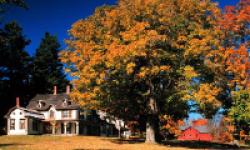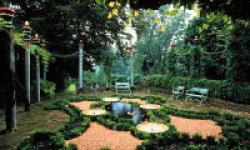Centuries before becoming a grand summer estate owned by one of America's wealthiest families, Castle Hill was well known by Native Americans who called the area Agawam, referring to its rich fishery. John Winthrop, Jr., son of the first governor of the Massachusetts Bay Colony, lay claim to Castle Hill in 1637. For more than two centuries, a succession of owners farmed the land.
Beginning in the 1880s, J.B. Brown transformed Castle Hill Farm from an agricultural holding into a gentleman's farm. He improved roadways and plantings and renovated his modest farmhouse into a rambling, shingle-style cottage that is now The Inn at Castle Hill.
In the decades following Richard T. Crane, Jr.'s purchase of the property in 1910, Castle Hill came to exemplify the American Country Place Era with its farm and estate buildings, designed grounds and gardens, and diverse natural areas. The Cranes hired some of the century's most notable architects and landscape architects. The first house built atop Castle Hill, an Italian Renaissance Revival villa designed by Shepley, Rutan and Coolidge, was razed and replaced in 1928 with the 59-room Stuart-style mansion designed by architect David Adler you see today. The Great House is furnished with period antiques.
Castle Hill is also home to a wide diversity of wildlife typical of northeast Massachusetts forests. Deer, fox, turkey, and a multitude of songbirds can be observed from the many trails and roads on Castle Hill. In addition, Castle Hill is home to several pairs of nesting great horned owls and red-tailed hawks. Due to its location on the Atlantic Ocean and adjacent Crane Beach, unusual species such as turkey vultures, migratory hawks, and even an occasional bald eagle can be seen soaring above the landscape.



Castle Hill reviews
Login to comment